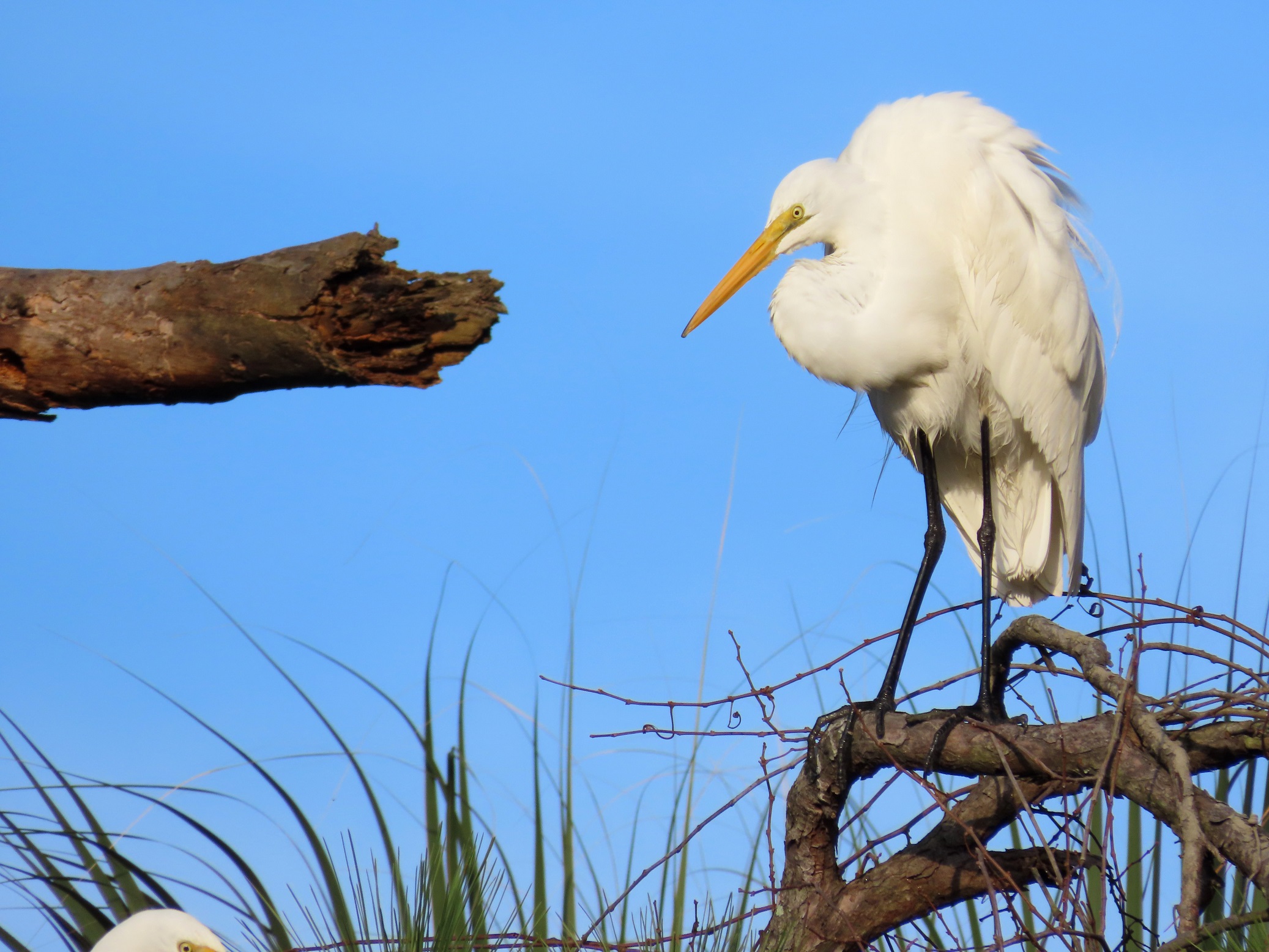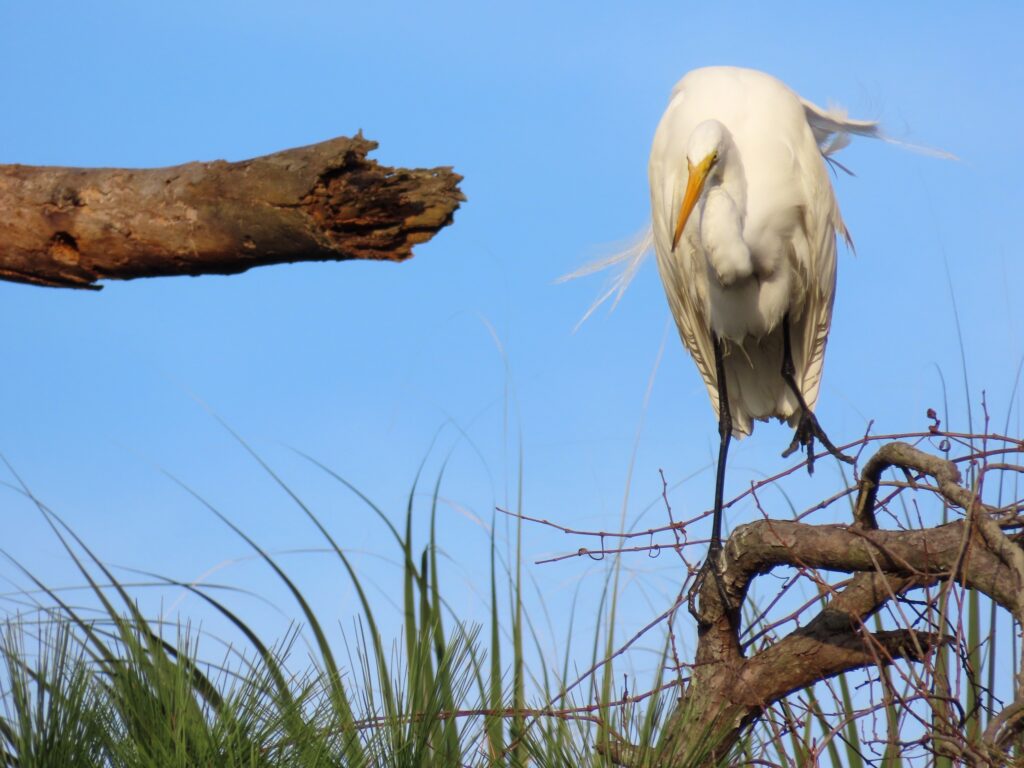


This week for Flora and Fauna Friday is a big alabaster bird we’re all familiar with, the Great Egret (Ardea alba).
The Great Egret is found in temperate coastal areas and tropical wetlands all across the globe. Here in South Carolina, it is most common in the tidelands of the Lowcountry but can crop up along wetlands throughout the state. The Great Egret is a large wading bird, standing about three feet in height, with slender features and an S-curved neck. They’re plumed from chin to tail with feathers of icy-white and lacking any discernable markings. They have long black legs, pastel-yellow eyes, and a golden-yellow, dagger-shaped bill at the end of an even longer neck. Great Egrets stick out like a full moon at midnight as they stand offshore in their preferred pluff-mud floored salt marsh habitats. However, believe it or not, this unpigmented plumage is their camouflage. It’s just that they’re hiding from fish and not from you. Great Egrets are ambush hunters and their prey are fish and crustaceans. By donning a blinding white coat of feathers, they can stand in the middle of the water in front of the sunlit sky and go unnoticed from those below the rippled surface. Their feathers act like a mirror for the light reflected off the water and their featureless plumage blends in with the infinite expanse of sky. Just another cloud. In the turbulent shallows they hunt in, that’s all it takes to disappear in plain sight. It also doesn’t hurt that their black legs blend in with the dark sediment, their front profile is very narrow, and they use forward speed to ambush their prey. Great Egrets, like other Herons and Egrets, use their sharp, pointed bill to grab, or occasionally impale, their prey. They do this by folding their neck into an “S” and then launching their bill straight forward with blinding speed. This direct, forward strike minimizes lateral movement and inhibits their prey’s ability to see the attack coming.
Great Egrets are solitary hunters but they tend to sleep in groups for protection. They also nest in groups in areas called rookeries. Rookeries tend to be in trees hanging over or growing in standing water or marshes and are often filled with nests of many different species of wading bird. Wading Birds do this to limit predation from Raccoons, Opossums, and Owls by concentrating in one small area and using the water, and any alligators swimming in it, as a deterrent. Leading up to the nesting season, mature Great Egrets will grow plumes from their back and the skin around their eyes will turn a brilliant chartreuse. Their elegant plumes are thin, covered in wispy barbs, and trail almost to the ground. Around the turn of the 20th century, these plumes were highly prized for use in women’s fashion and the Great Egret, along with other American wading birds, were nearly extirpated from the United States. Thankfully plume hunting was banned shortly into the 20th century and Great Egrets have made a splendid recovery.